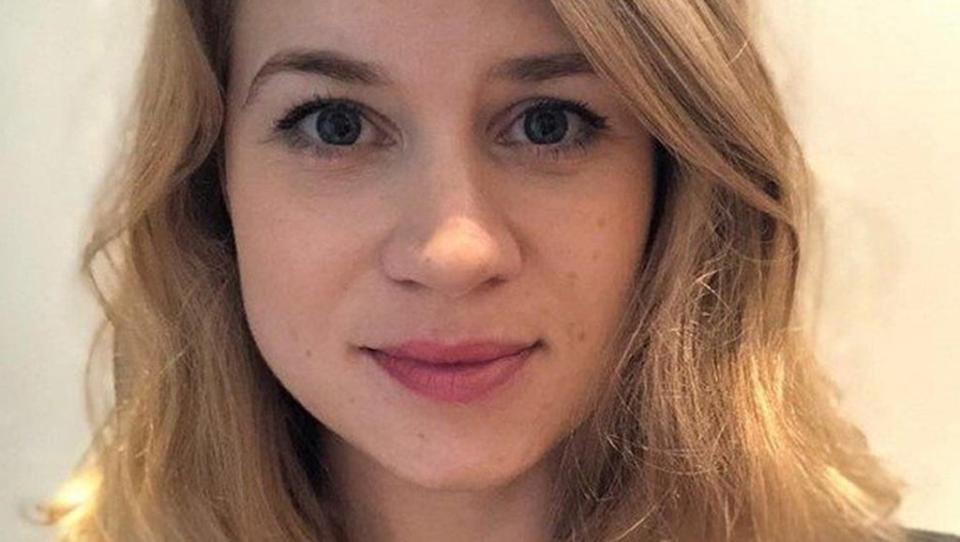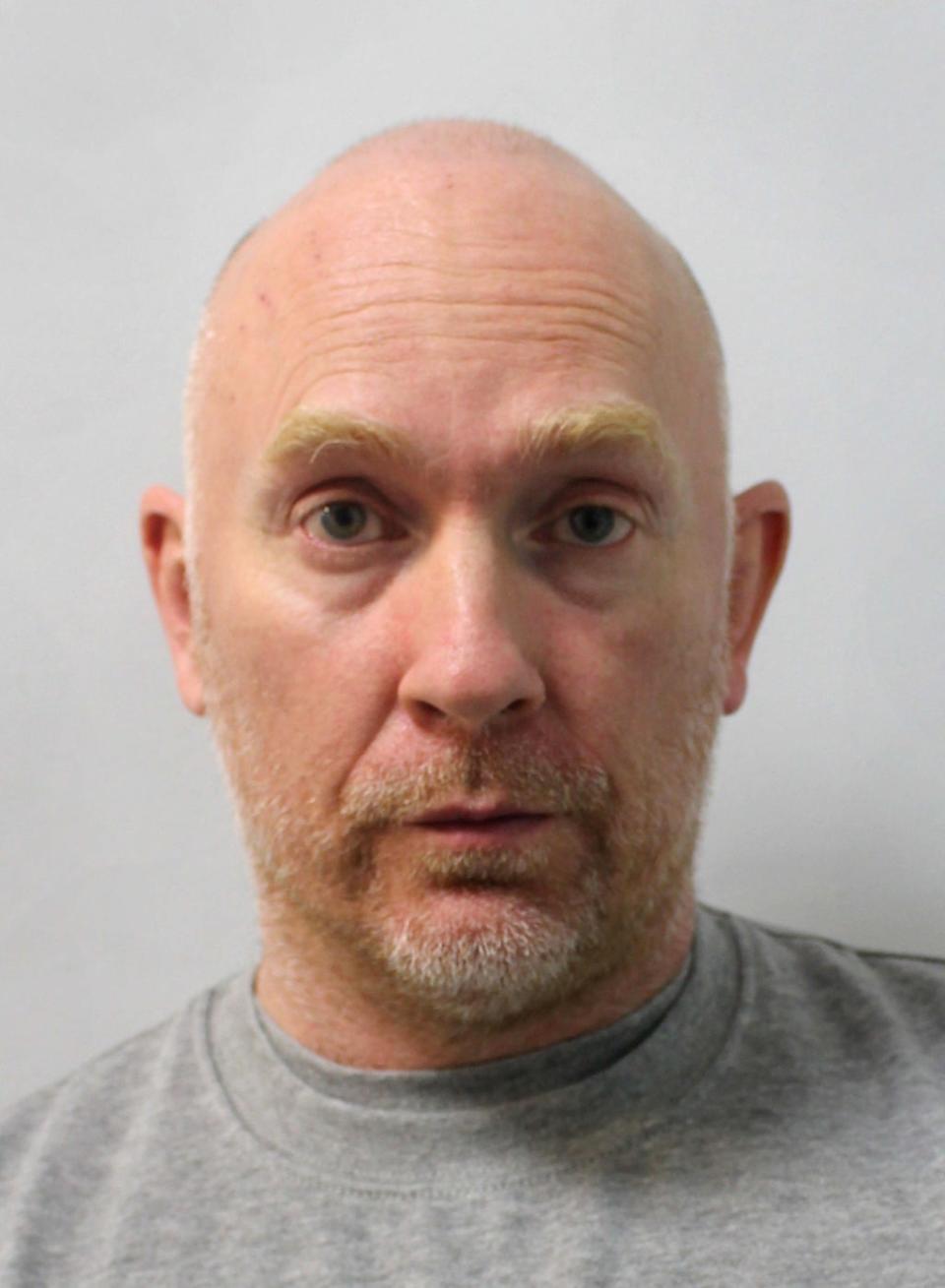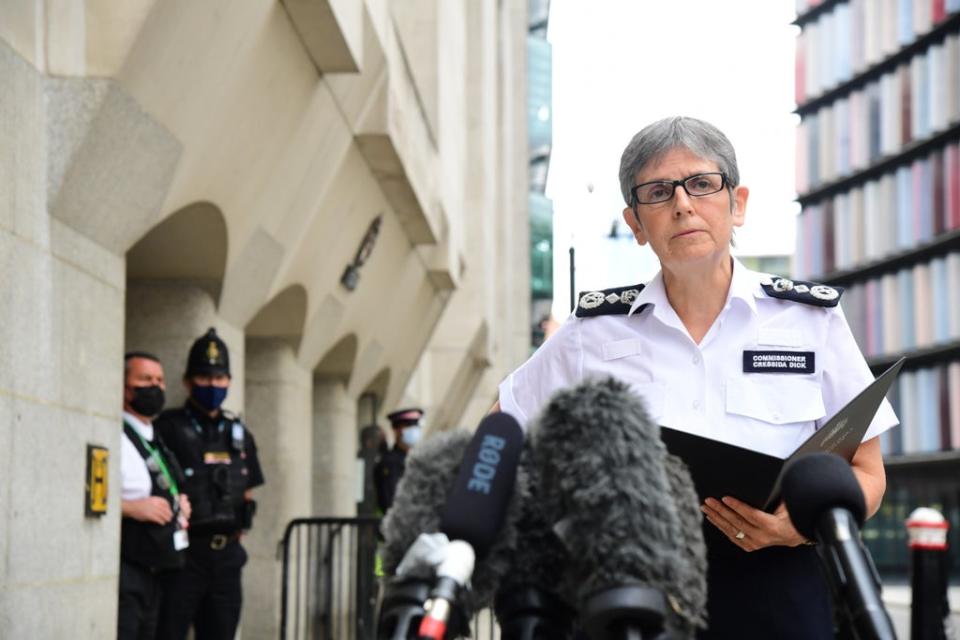Met PC Wayne Couzens used Covid laws to stage arrest of Sarah Everard, court hears

The Met Police officer who murdered Sarah Everard used Covid-19 laws to kidnap the marketing executive as she walked home through the streets of south London, the Old Bailey heard.
PC Wayne Couzens, 48, used his official warrant card to carry out the bogus arrest of the 33-year-old in Clapham, south London, as she headed home from an evening spent with a friend on March 3.
The Old Bailey heard Couzens was carrying and wearing “an array of equipment”, including handcuffs, to dupe Ms Everard into thinking he was an undercover officer carrying out his lawful police duty.
After being put into Couzens’ vehicle, Ms Everard was driven out of London before being raped and strangled by the police officer, who then burned her body in a patch of woodland near Ashford in Kent.

Opening the case on Wednesday morning, prosecutor Tom Little QC said Couzens, a firearms-trained parliamentary and diplomatic protection officer, had carried out Covid-19 patrols in London in late January this year.
“These were uniform Covid patrols in which the Covid regulations were enforced. The defendant undertook a couple of such shifts,” he said.
“He was therefore aware of the regulations and what language to use to those who may or may not have breached them, if speaking to them.
“He was to use that knowledge to kidnap Sarah Everard.”
Couzens–sat with his head bowed in the dock–had clocked off from a 12-hour shift on the morning of the kidnapping, but had already made preparations for the crimes he was about to commit, the court heard.
He took police issue equipment home with him, hired a vehicle, and purchased a spare key for his set of handcuffs.
“Sarah Everard’s disappearance on the evening of March 3, 2021 led to one of the most widely publicised missing person investigations this country has seen,” said Mr Little.
“In the days that followed, and then after the discovery of her body in an area of woodland in Kent on March 10, what had taken place became widely summarised on social media as #shewasonlywalkinghome.
“That is true. Sarah Everard was only walking home when she was taken off the street from her family, friends, and colleagues by the defendant on the evening of March 3, 2021.
“However those five words do not fairly or completely begin to describe what happened to her and her body at the hands of the defendant in the hours and days that followed her kidnap.
“Whilst it is impossible to summarise what the defendant did to Sarah Everard in just five words, if it had to be done with a hashtag, it would be more appropriate to do so as deception, kidnap, rape, strangulation, and fire.”
The prosecutor said a former boyfriend of Ms Everard describes her as “extremely intelligent, savvy, and streetwise”, and “not a gullible person”.
“He could not envisage her getting into a vehicle with someone unknown unless by force or by manipulation”, added Mr Little.
“As the evidence reveals, that is precisely what happened.”
Couzens hunted for ‘lone, young female’
The court was played CCTV of the night of Ms Everard’s disappearance, as she stopped by a Sainsbury’s shop in Brixton Hill to buy wine on her way to a friend’s home.
“She walked along the South Circular and she arrived at her friend’s flat at about 6.30pm with the bottle of red wine she had purchased”, said Mr Little.
“They ate, drank the bottle of wine, and talked about various subjects.
“The fact she had been to a friend’s house for dinner at the height of the early 2021 lockdown made her more vulnerable to, and more likely to submit to, an accusation that she had acted in breach of the regulations in some way.”
Couzens’ movements that night have also been pieced together by police, who tracked him from a Tesco shop in Kensington, around the Earl’s Court area, and then to south London where he came across Ms Everard.
“The circular route taken by the defendant as well as the areas in which he was driving are consistent with the defendant hunting for a lone young female to kidnap and rape, which is precisely what he did,” added the prosecutor.
CCTV cameras in London buses travelling along the South Circular provided police with snapshots of the kidnapping.
“Sarah Everard can be seen standing on the pavement, behind the car, facing the defendant, a few feet apart,” said Mr Little.
“In the final sequence, the defendant appears to touch his belt and to be holding up his hand towards Sarah Everard, as if showing her something which we say was the warrant card. At some time after this, he must have handcuffed her.
“Sarah Everard can be seen in the rear of the vehicle and someone who can only be the defendant is in the front seat. By then, she had been taken and is in the vehicle as he drives away.”
A couple, driving along the dual carriageway, saw Ms Everard being kidnapped and commented to themselves on the unusual sight.
“The woman on the pavement already had her left arm behind her back, and was in the process of ‘giving her other arm behind her back’ as the man placed the handcuff on her right arm”, Mr Little said, describing the couple’s recollection of the incident.
“Sarah Everard was compliant, with her head down and did not appear to be arguing. The defendant appeared to be confident.
“The immediate impression the passenger formed was that she was witnessing an undercover police officer arresting a woman, whom she assumed ‘must have done something wrong’.
“So surprised was the witness by what she had seen, as she considered it to be relatively unusual and not something she had ever witnessed before, she remarked to her husband: ‘I’ve just seen a woman being handcuffed’.”
Sarah was ‘detained by fraud’
Mr Little said Ms Everard was “detained by fraud” by Couzens, who used the routine ‘rear stack’ position to carry out the fake arrest.
“At some point fairly soon after driving from the pavement onto the South Circular and having not gone to a police station, Sarah Everard must have realised her fate”.
Ms Everard’s body was eventually discovered on March 10, and Couzens – who was heavily in debt and contemplating leaving the Met due to a pay dispute – was identified as the killer.
However he has maintained a determined silence on the exact circumstances of the rape and murder, leaving Ms Everard’s family and friends in the dark over when and where she was killed.
The court heard after the kidnapping, Couzens drove Ms Everard to a quiet road in Dover where he transferred her to another vehicle.
“The defendant must have moved Sarah Everard between the vehicles”, said Mr Little. “In order to have done so and without her escaping or trying to escape or make a noise or in any way do something about it, it can be inferred that he, at least, must have threatened her.”
It is believed Ms Everard was raped by Couzens after he had driven to a “remotely rural location” around the villages of Shepherdswell and Elythrone, west of Deal, where his phone was located from midnight to 12.45am on March 4.
Couzens then drove back to Dover, and is believed to have already murdered Ms Everard by 2.30am when he stopped at a service station to buy two bottles of still water, an apple juice, a Lucozade orange, and a carrier bag.
Mr Little said the Dover South Services CCTV system was inadvertently switched off, but Couzens “was not to have known that and to have left her alive – even in the boot of the Seat – would have been risky or foolhardy in case she was able to make any noise”.
After Ms Everard’s murder, Couzens left the woodland area where her body was eventually found at just after 6am.
He stopped for a hot chocolate with coconut milk and a bakewell tart at a Costa Coffee in Dover at 8.15am, before returning the hire car to Enterprise Rent-a-Car and heading to Sandwich where he threw Ms Everard’s mobile phone into the flood relief channel.
This was the first piece of evidence Couzens tried to dispose of, having removed the SIM card, but it was later recovered by a police diver.
Couzens returned to his family home, taking a call from a dental surgery to rearrange a scheduled appointment for his two children.
“The defendant answered the call”, said Mr Little. “He was calm and accepting of the inconvenience.”
The following day, Couzens travelled back to Dover where he bought a petrol can filled with fuel which he used to set fire to Ms Everard’s body.
He was captured on CCTV at the BP garage paying for the petrol, as well as a caramel latte, and also stopped for a £6.19 large McDonald’s meal on his way back to Hoads Wood where he had left the body.
Couzens set fire to Ms Everard’ body inside a refrigerator, and left it to burn as he went to buy more equipment to cover up the crimes and carry out family errands.
The court was also played a calm and breezy three-minute call from Couzens to a vet that morning, to arrange an appointment on March 12 over their pet French bulldog Maddie’s separation anxiety.
He used B&Q builder’s bags to move the badly burned corpse from the fridge, over “difficult terrain”, to a pond where she was eventually discovered.
Shockingly, Couzens arranged a family trip to the same woods on March 7, telling a man they met that they were clearing up broken glass on their plot of land.
“The defendant took his family on a family trip to the very woods where days earlier he had left Sarah Everard’s body, then returned to burn it and then returned again to move and hide it”, said Mr Little.
“It follows that he allowed his children to play in relatively close proximity to where Sarah Everard’s body had been dumped in the pond.”
The killing prompted national outrage and sparked protests at the rate of violence against women.
In a statement on Wednesday morning, the Met said its officers are “sickened, angered and devastated by this man’s crimes which betray everything we stand for”.
Couzens pleaded guilty in July to Ms Everard’s murder, kidnap and rape. He could face the rest of his life in prison when Lord Justice Fulford passes sentence on Thursday.

Speaking outside the Old Bailey after Couzen’s guilty pleas, Met Police Commissioner Dame Cressida Dick said: “All of us in the Met are sickened, angered and devastated by this man’s truly dreadful crimes. Everyone in policing feels betrayed.”
The police watchdog has received a string of referrals relating to the Couzens case, with 12 police officers being investigated.
The Independent Office for Police Conduct (IOPC) said it was looking at whether the Met failed to investigate two allegations of indecent exposure relating to Couzens in February, just days before the killing.
Kent Police are also being investigated over their response to a third allegation of indecent exposure dating back to 2015.
The case has prompted renewed concern about police recruitment checks and why Couzens continued to hold a warrant card, despite the allegations of sexual offences.
Scotland Yard has said there was no information available at the time that would have altered the vetting decision in his case.
Read More
‘Monster’ policeman used Covid rules to kidnap Sarah Everard in false arrest
Sarah Everard’s father asks killer to face him as family share impact statements

 Yahoo News
Yahoo News 